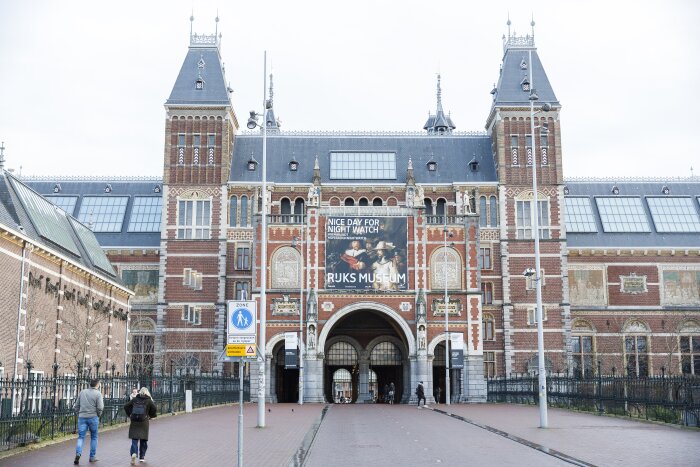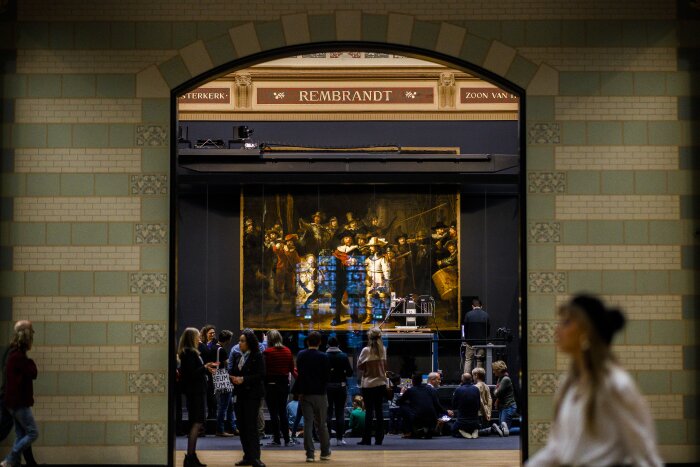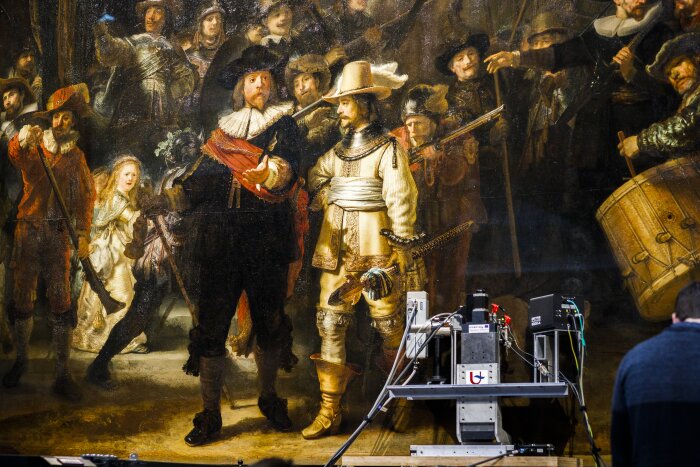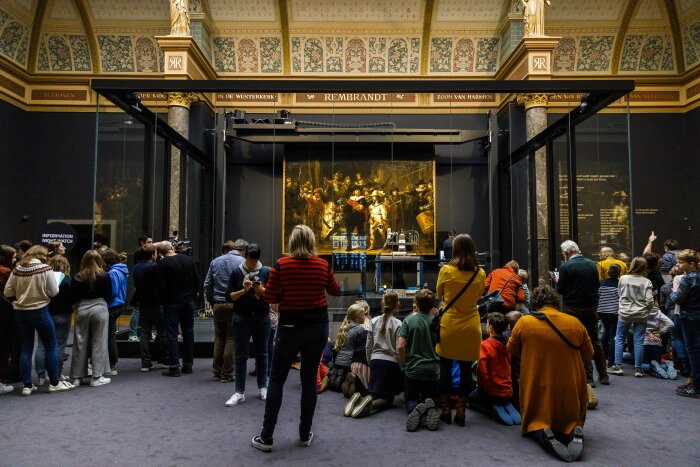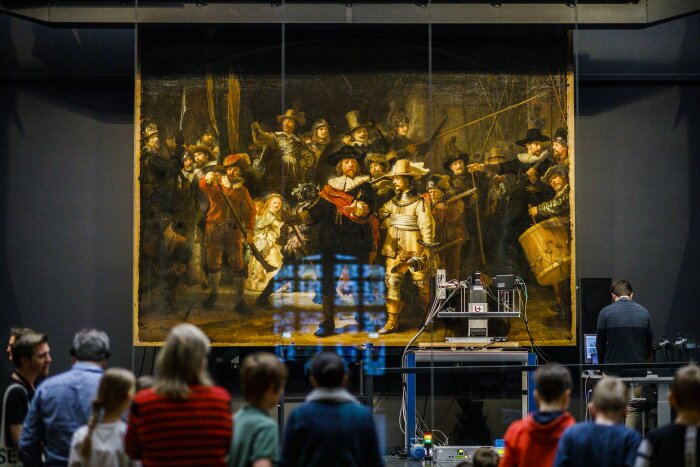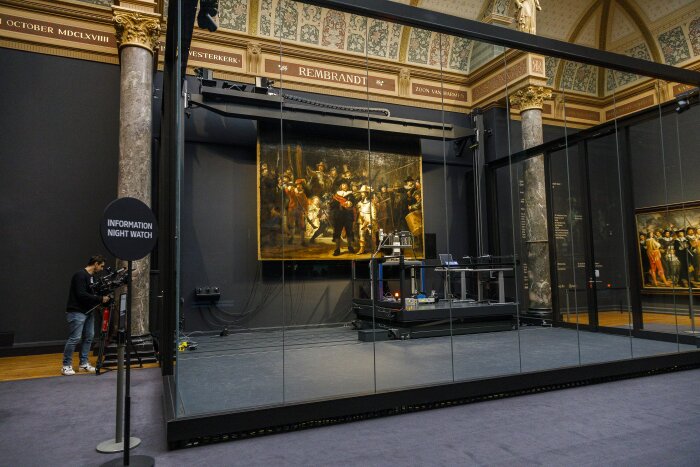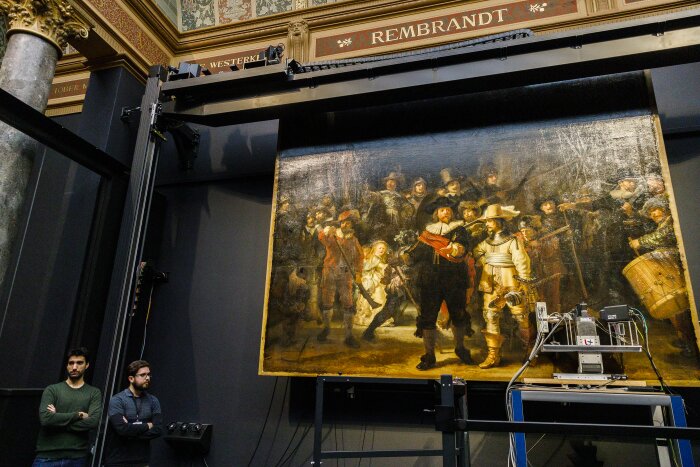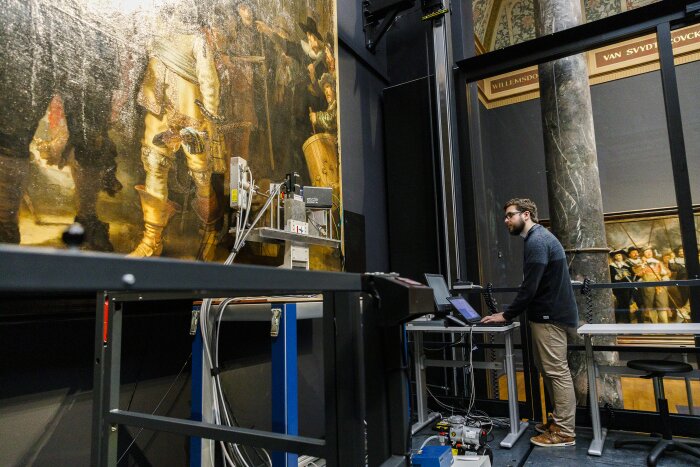UAntwerp helps ensure the future of the Night Watch
Scientists analyze world-famous painting in great detail with unique scanner
International media links: Le Monde.fr (15/01/2023), News in France (15/01/23), Rundown Bulletin (15/01/23), ESRF News (17/01/2023), EurekAlert (17/01/2023), Physics.Org (17/01/2023), ScienceDaily (17/01/2023), ArtHistoryNews (17/01/2023), Crumpe (18/01/2023), Express.co.uk (18/01/23), Studyfinds (18/01/2023), Ansa.it (18/01/2023), Youtube (18/01/2023), Labrujula Verde (18/01/2023), Galileu (18/01/2023), ScienzeNotizie.it (18/01/2023), L'Eco Di Bergamo.it (18/01/2023), UfoCommunity.es (18/01/2023), MirageNews.au (19/01/2023), Focus.pl (20/01/2023), Actuelno.ru (20/01/2023), NakedScience.ru (20/01/2023), SwiftTelecast (20/01/2023), IndianEducationDaily.in (21/01/2023), Almcqs.pk (21/01/2023), Nauzal.ua (21/01/2023), NewsRnd (21/01/2023), ScienceAlert (23/01/23), ArsTechnica (23/01/23), TechInsider.ru (23/01/23), GeorgiaTV1.ge (23/01/23) , JerusalemPost.il (23/01/23), CTVNews.ca (23/01/23), Medium (24/01/23).
Local media: VRT Journaal (20/01/2023), VRT Radio (20/01/2023), Monumentaal (20/01/2023), RTBF (21/01/23), HLN (21/01/2023), Het Nieuwsblad (21/01/2023), LeSoir (21/01/2023)
In 2020, Rembrandt's Night Watch was subjected to a thorough examination. Researchers from the University of Antwerp, together with scientific teams from The Netherlands, France and The United States participated in this operation, analyzing the masterpiece down to its crystal structure with their special X-ray diffraction scanner and with other non-invasive methods.
The Night Watch, painted by Rembrandt van Rijn in 1642, is one of the most famous works of art in the world. It has been on display in the Rijksmuseum in Amsterdam since 1808. And that's where it should stay for a very long time to come, preferably in excellent condition. In July of 2019, the museum launched 'Operation Night Watch', subjecting the painting to thorough examination and preparing it for restoration.
"The painting was last restored in 1976," says Robert Van Langh, Director of Conservation & Science at the Rijksmuseum. "It's starting to show some signs of old age. During an extensive examination, we took thousands of ultra-high-resolution photographs, and scientists are now using scanners and lasers to analyze the canvas down to the microscopic level."
X-rays
For the duration of these efforts, The Night Watch was (and still is) displayed in a glass enclosure. This way, the public could still admire the painting, and even follow the examination activities. Over the first weeks of 2020, scientists from UAntwerp's AXIS research group (Antwerp X-ray Imaging and Spectroscopy) were hard at work in this glass room. With their unique MA-XRPD scanner (Macroscopic X-ray Powder Diffraction), they were studying the masterpiece with the help of X-rays.

The researchers explain: "The rays hitting the crystal structure of the pigments in the painting are deflected and reflected in specific ways. Each type of crystal has its own unique pattern. This way, we can identify the crystalline pigments in The Night Watch without touching the painting. The scanner – a unique prototype – also provides crucial information about the condition of the paint layers, and more specifically about the so-called degradation products. These substances are formed in the paint over time through chemical reactions."
Signs of paint formulation and ageing
In January 2023, an article describing some of the results of the analysis was published in the prestigious journal 'Angewandte chemie - International Edition'. Prof. Koen Janssens highlights some of the findings:
"We encountered a number of chemicals that tell us various pigment degradation processes have been taking place over the years, for example in the red sash worn by Captain Banninck Cocq, the main figure. In the darker parts of the painting, corrosion crusts rich in sulphates have been found which may be linked to atmospheric pollution with sulfur gases in the past. In addition to that, our investigations lead to the discovery of the presence of an unusual compound, lead(II)formate, Pb(HCOO)2, in several areas of the painting. It is for example faintly present on the breast plate of Luitenant Ruytenburg, one of the other central figures of the Nightwatch. Until now, this compound was never reported in historical oil paints."
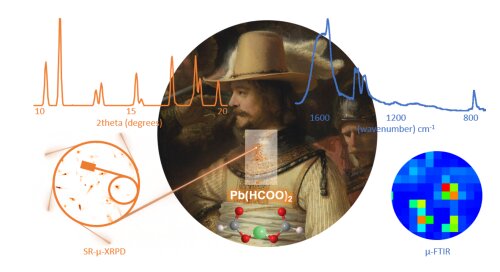
Also a second related compound, lead(II)formate hydroxide, Pb(HCOO)OH was encountered. Our current interpretation is that these compounds are the result of the use of strongly reactive chemical called lead oxide, PbO, as a drying agent for oil paint. Its use was recommended for this purpose in 17th century recipes and lab experiments confirmed that mixing PbO with linseed oil leads to the formation of lead(II)formates during the polymerization (drying) of the oil. These data show that Rembrandt effectively followed this recommendation in his workshop. These results represent important information for the Rijksmuseum's research & restoration team to properly assess the condition of the paint. These results will inform the restoration treatment and help to determine the best course of action.
In the figure below, the other areas of the Nightwatch are shown where lead(II)formate was found are indicated, for example in the facial areas of Banninck Cocq and Sergeant Kemp, in Ruytenburgh's hat and the cuff of the Red Musketeer; in all areas both the distribution of hydrocerussite (Pb3(CO3)2(OH)2, the main component of lead white) and that of lead(II)formate are shown, in view of the similarity between both.
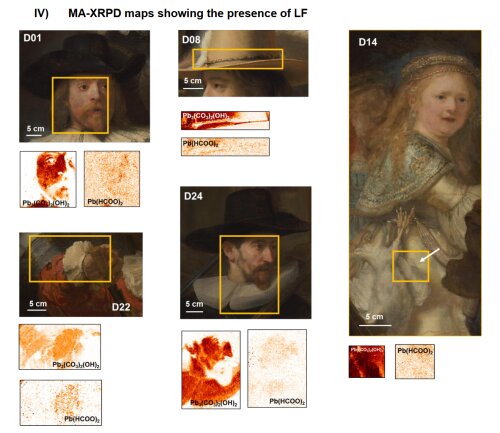
Keep track of the latest developments via www.uantwerpen.be/axes-operation-nightwatch
